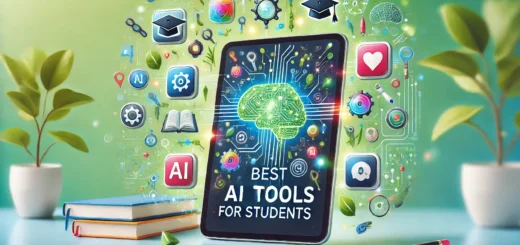Online Learning & Remote Education: The Future of Learning
Introduction
The rise of online learning and remote education has transformed the traditional education system. With the advancement of technology, students and professionals can now access high-quality education from anywhere in the world. Whether it’s through massive open online courses (MOOCs), virtual classrooms, or AI-driven learning platforms, remote education is becoming the new norm. This article explores the benefits, challenges, and future of online learning.
What is Online Learning & Remote Education?
Definition and Overview
Online learning, also known as e-learning, refers to education delivered through digital platforms, allowing students to learn at their own pace. Remote education takes this a step further by enabling students and teachers to interact in virtual classrooms, eliminating the need for physical presence.
Types of Online Learning
- Synchronous Learning: Real-time online classes via Zoom, Google Meet, or Microsoft Teams.
- Asynchronous Learning: Pre-recorded lectures, discussion boards, and self-paced courses.
- Hybrid Learning: A mix of online and traditional classroom learning.
- Massive Open Online Courses (MOOCs): Free or paid online courses available to a global audience.
Benefits of Online Learning
1. Flexibility and Convenience
One of the biggest advantages of online learning is flexibility. Students can learn at their own pace, access materials anytime, and fit their studies around personal and professional commitments.
2. Cost-Effectiveness
Online courses are often more affordable than traditional education. Students save on commuting, accommodation, and expensive textbooks by using digital resources.
3. Access to a Wide Range of Courses
Online platforms like Coursera, Udemy, and Khan Academy offer thousands of courses in various fields, from programming and business to arts and healthcare.
4. Learning from Global Experts
Remote education enables students to learn from top educators and industry experts worldwide, breaking geographical barriers.
5. Personalized Learning Experience
With AI-driven platforms, students receive personalized recommendations and adaptive learning paths, making education more effective.
Challenges of Online Learning
1. Lack of Face-to-Face Interaction
Unlike traditional classrooms, online learning lacks direct interaction with teachers and peers, which can impact engagement and motivation.
2. Technical Issues and Digital Divide
Not all students have access to high-speed internet or necessary devices, creating a digital divide between privileged and underprivileged learners.
3. Self-Discipline and Time Management
Online learning requires strong self-motivation and time management skills, as there is less external pressure compared to traditional classrooms.
4. Limited Hands-On Experience
Certain subjects, such as medical or engineering studies, require practical training that online education struggles to provide effectively.
Popular Online Learning Platforms
1. Coursera
Offers courses from top universities like Harvard, Stanford, and MIT.
2. Udemy
A marketplace with thousands of affordable courses in various fields.
3. Khan Academy
Provides free educational content for students from kindergarten to high school.
4. edX
A non-profit platform with courses from leading institutions.
5. LinkedIn Learning
Focused on professional and skill-based courses for career advancement.
The Future of Online Learning & Remote Education
1. Integration of AI and Machine Learning
AI-powered education platforms will personalize learning experiences based on students’ strengths and weaknesses.
2. Virtual Reality (VR) and Augmented Reality (AR) in Learning
VR and AR will make online learning more interactive, especially for subjects requiring hands-on practice.
3. Blockchain in Education
Blockchain technology can secure student records, making certificates and degrees tamper-proof.
4. Gamification and Interactive Learning
Incorporating game-based learning elements will improve engagement and retention rates.
5. Increased Recognition of Online Degrees
Employers and educational institutions are increasingly accepting online certifications, making remote education more credible.
Additional Considerations
1. The Role of Governments and Educational Institutions
Governments and universities are investing more in digital education infrastructure to support online learning. Scholarships and funding opportunities are being expanded to ensure education remains accessible to all.
2. Best Practices for Online Learners
- Set a dedicated study space and schedule.
- Take regular breaks to avoid burnout.
- Engage in discussion forums and virtual study groups.
- Utilize online resources such as note-taking apps and productivity tools.
3. The Impact of Online Learning on Traditional Education
While online learning is growing, it is unlikely to completely replace traditional classrooms. Instead, blended learning models combining both online and in-person education are expected to dominate the future.
Conclusion
Online learning and remote education have revolutionized the way we acquire knowledge. Despite its challenges, the flexibility, accessibility, and cost-effectiveness of e-learning make it a preferred choice for millions worldwide. With continuous advancements in technology, the future of online education looks promising, providing limitless opportunities for learners and educators alike.


